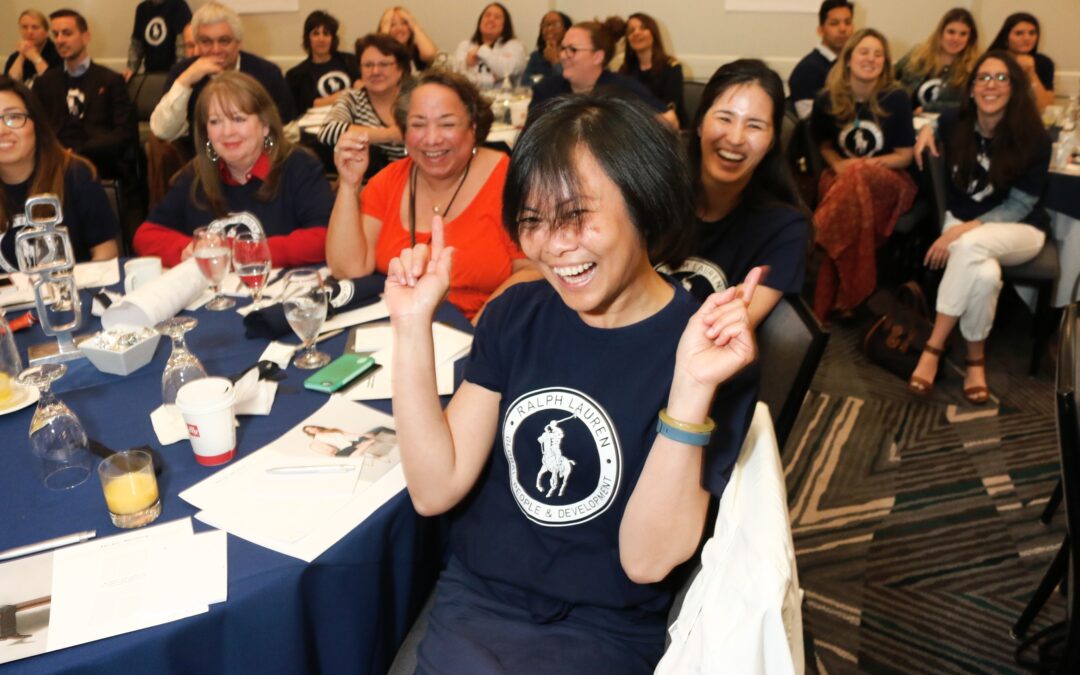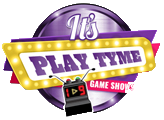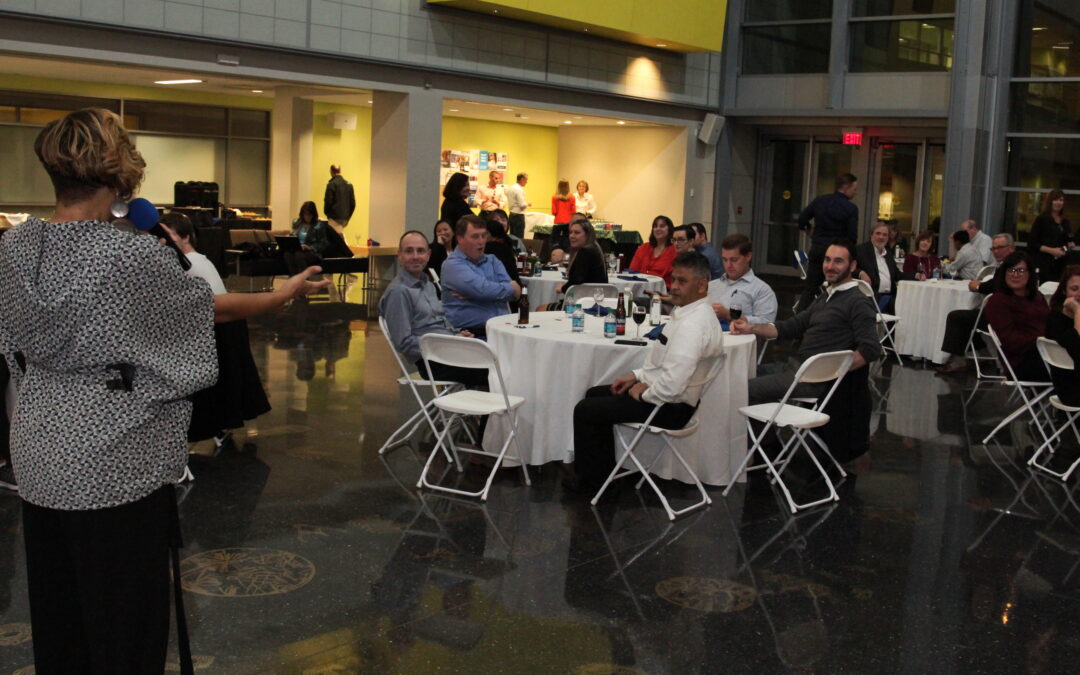

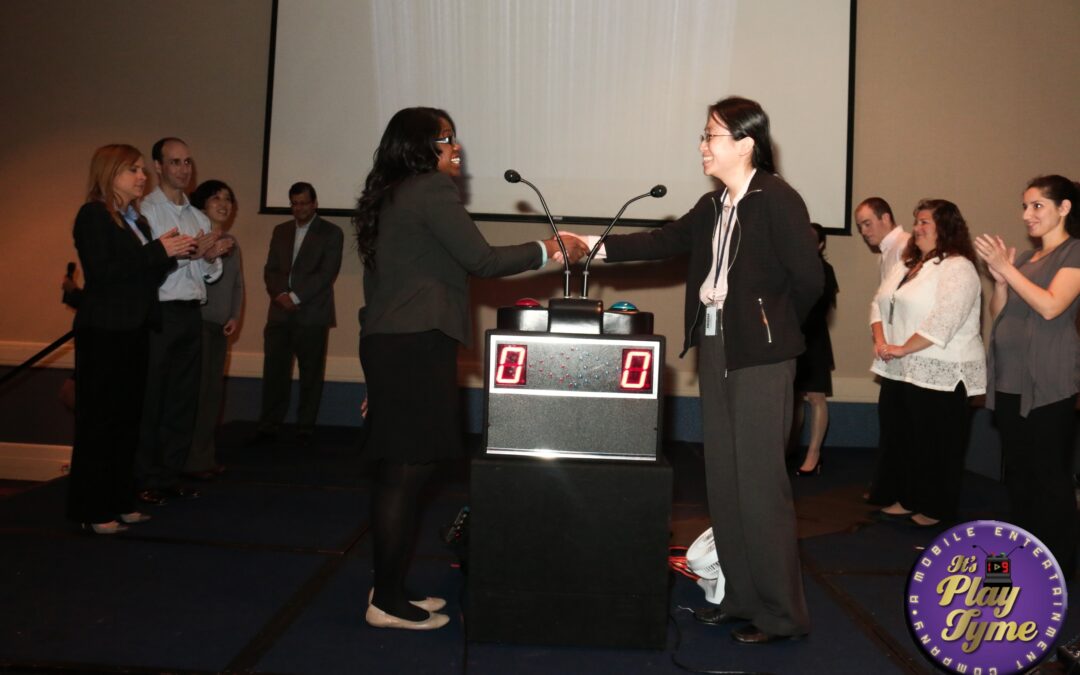
Top 3 Icebreakers for Leadership Sessions | Kickstart Engagement
When it comes to planning effective leadership meetings, incorporating the top icebreakers for leadership meetings is more than just a good idea—it’s a game-changer. Research shows that companies that use icebreakers in their leadership programs experience a 30%...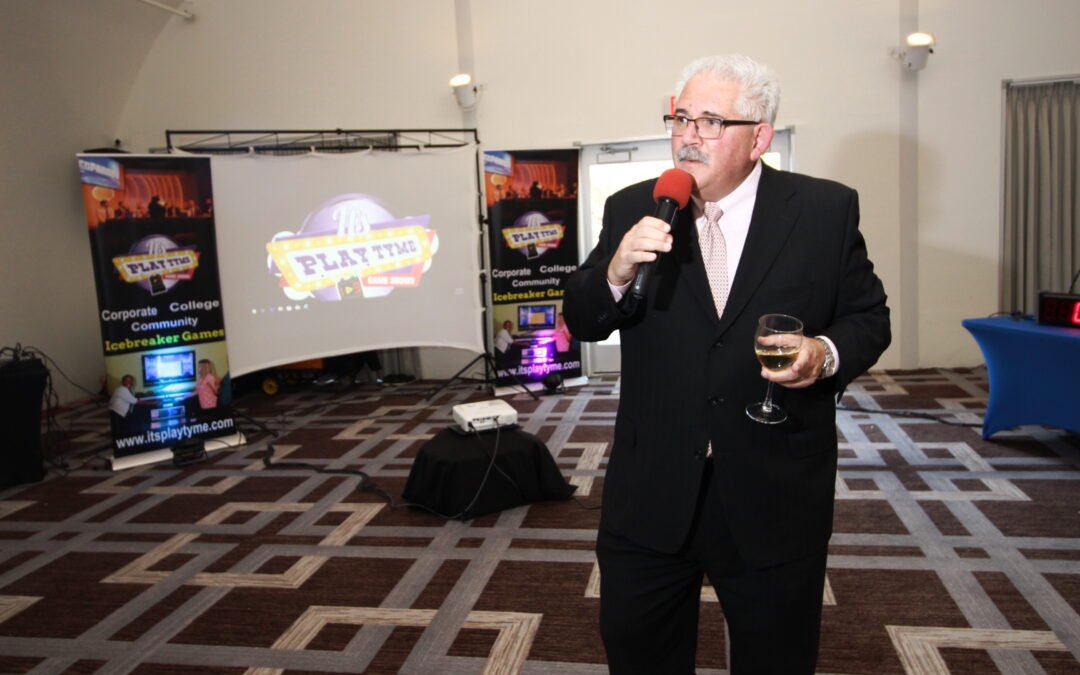
6 Fun Game Shows for Team Retreats Offsite: Boost Engagement
Have you ever thought about hosting live game shows for team retreats offsite? This can be a great addition to add it at the end, after all meetings have ended to make if a memorable event.
Adding Game show activities at offsite team retreats are a fun, very interactive thing to do, and can make your team gatherings lively and much more competitive.
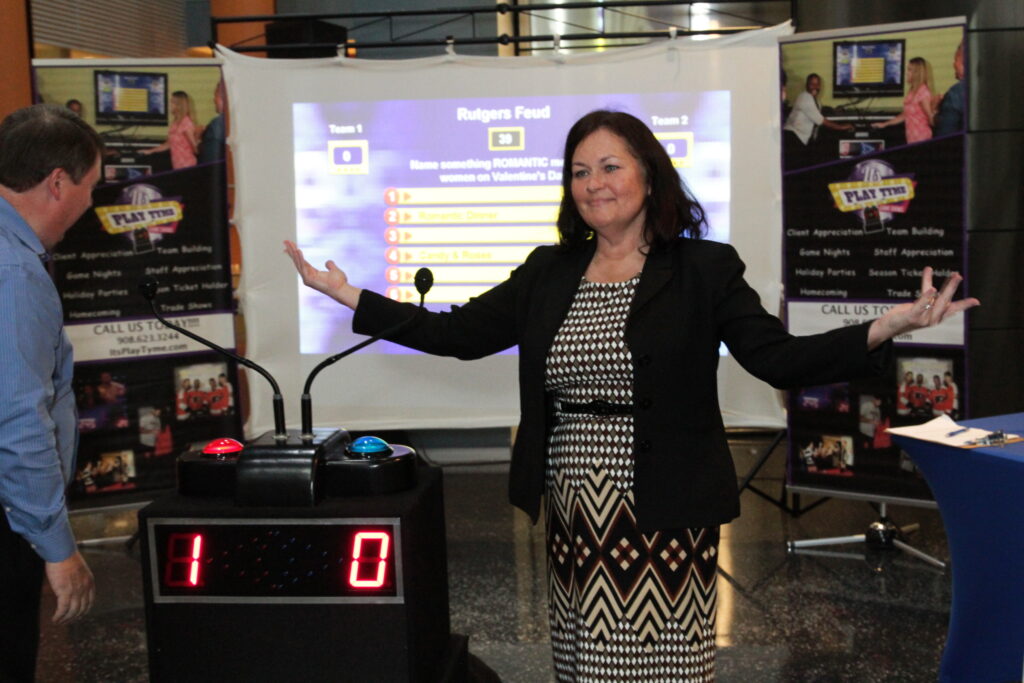
Great-team-member
Team building games are not what they used to be. Many team leaders now, seek game show activities to mix fun with teamwork and friendly competition.
They’re a great way to brighten up company retreats. You can choose from several well-loved TV shows to games tailored just for your team.
This is a chance for everyone to come together, work as a team, and show off skills you might not know they have.
Are you excited to see how these activities can change your next retreat? Let’s look at seven game show ideas that will make your team thrilled. They might even ask for more!
Key Takeaways:
- Game shows can significantly boost team morale and engagement during offsite retreats
- Interactive games foster collaboration and communication among team members
- Popular TV game shows can be easily adapted for corporate settings
- These activities work well for both in-person and virtual team-building events
- Game shows provide a fun way to relieve workplace stress and strengthen team bonds
Got Games? – Press Play! #boostmorale #teambuilding
![]()
Book a live game show experience today!
Contact us for further details.
For Immediate assistance by text – 917-670-4689
No deposit required. 5 Star Google Reviews.
We plan and facilitate all activities.
The Power of Game Shows in Corporate Team Building
Game shows are changing how companies build teams. They are fun and offer a mix of entertainment and learning. This makes them great for improving how people feel at work. Game shows turn daily work into fun team challenges, adding excitement and friendship.
The special thing about game show activities is they can be customized. They work for all kinds of teams, big or small, and fit any schedule.
- Improve team communication
- Encourage friendly competition
- Showcase individual talents
- Break down departmental silos
- Celebrate company milestones
These activities strengthen how employees work together. They encourage creative thinking and quick communication. This makes teams work better together.
The fun, interactive part of game shows keeps people interested. They are not like the usual team-building stuff. People remember these events for a long time because they’re so enjoyable.
| Game Show Element | Team Building Benefit |
|---|---|
| Competitive Challenges | Boosts motivation and teamwork |
| Knowledge-based Questions | Encourages continuous learning |
| Time Pressure | Improves decision-making skills |
| Team Strategizing | Enhances collaborative problem-solving |
Using game shows can be more than just a fun time. It’s a way to help your team grow and make a positive work culture. These shows can really strengthen your team and make them work together better.
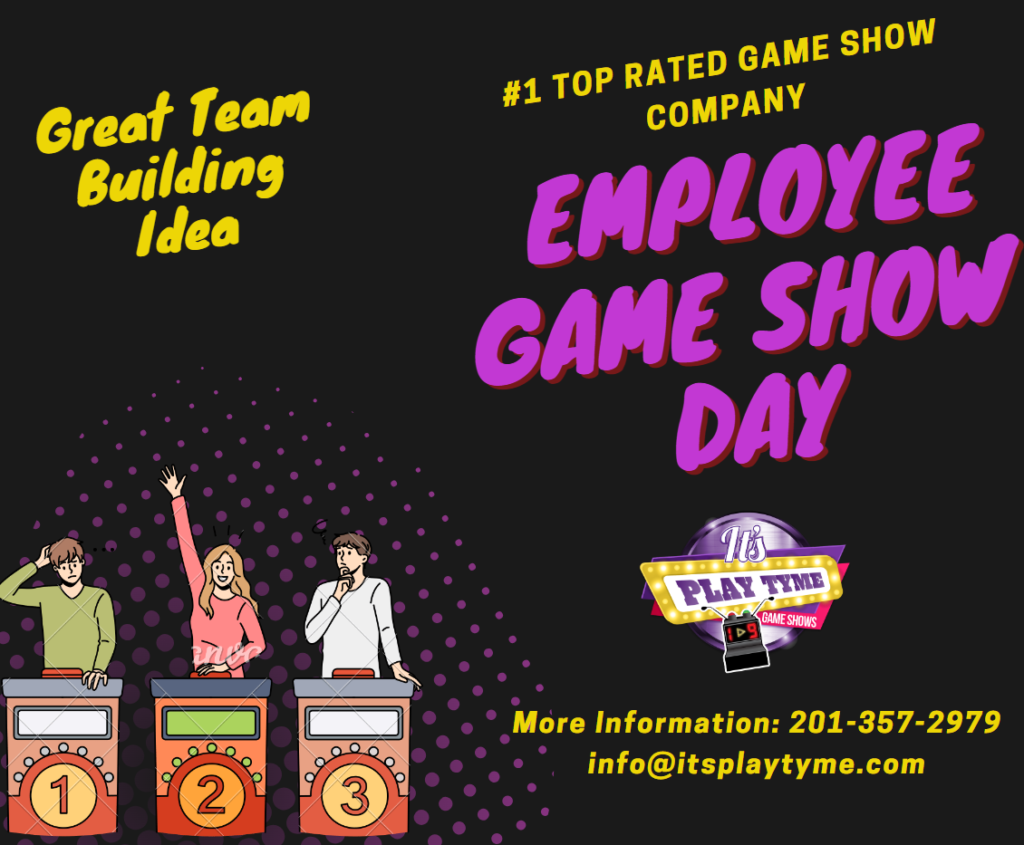
employee-engagement-game-show-idea
Game Shows for Team Retreats Offsite: Planning and Execution
Planning game shows for team retreats offsite takes careful thought. This ensures a fun and successful event. Follow these steps to make corporate team building activities that boost morale and teamwork.
First, pick games that match your team’s interests and company vibe. Think about the team’s size, their skills, and the time you have. Also, look at the company’s goals and values.
Next, focus on how you’ll manage the game shows logistically. For offsite events, check if the venue can fit your needs. Think about the space, technology, and any equipment you might need.
Consider professional services to help. They can create game shows tailored to your group. They take care of setup and the event itself. This lets you focus less on details and more on the fun.
| Planning Aspect | DIY Approach | Professional Service |
|---|---|---|
| Time Investment | High | Low |
| Cost | Variable | Fixed |
| Quality Assurance | Dependent on team skills | Guaranteed |
| Customization | Full control | Limited options |
For online retreats, make sure everyone has the tech they need. Provide clear instructions. Schedule the games to keep people interested. Mix in other activities for a well-rounded event.
Planning well and carrying everything out smoothly is crucial. This makes for an unforgettable company retreat. It will bring everybody closer and make them happier.
Maximizing Team Building Potential Through Interactive Games
Interactive games in the office really help with team building. They boost communication and encourage working together. Playing fun games lets your team improve how they solve problems in a fun way.
For these activities to work well, match the games with what your company believes in. It’s also good to mix teams from different areas. Discuss what worked well after each game to learn from each other.
Try adding a charitable aspect to your games. Teams could play to win money for a charity they care about. This adds extra purpose to the fun and shows your company gives back.
Playing games regularly keeps the team spirit strong. It builds a strong bond and improves your work culture. The main aim is to make everyone happy and engaged while enjoying each other’s company.
1 – The Challenge/Jeopardy: Test Your Team’s Knowledge
Jeopardy is loved at team retreats. It’s a mix of fun and challenge. It’s great for lifting spirits and team bonding.
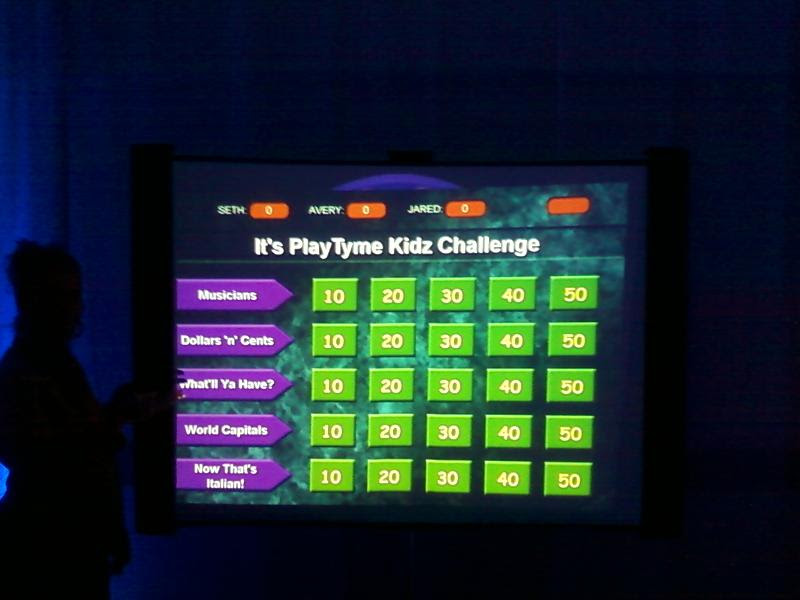
>>>>Click here for fun team building games to boost morale.
a – Setting Up the Game Board
Making a Jeopardy board is easy. You just need a whiteboard or slides. Here’s what to do:
- Choose 5-6 categories that fit your work
- Make 5 questions for each, starting easy and getting harder
- Give point values to these questions (like 100, 200, 300)
- Use sticky notes or slides to show the questions
b – Customizing Categories for Your Company
Add topics that reflect your business to make the game better. You might want to include:
- Company history and achievements
- Knowledge about your products
- What’s new in your industry
- Interesting facts about your team
- Trivia for everyone to enjoy
c – Hosting Tips for Maximum Engagement
Here are some tips for a successful Jeopardy game:
- Choose a lively host
- Decide on how teams will buzz in or answer
- Let teams talk strategy for the “Final Jeopardy”
- Show scores to keep things exciting
- Plan small rewards to encourage taking part
With these tips, Jeopardy can turn your team event into something special. It allows everyone to share what they know best. This builds team spirit and makes work feel even more fun for everyone.
2 – Family Feud: Survey Says It’s a Hit!
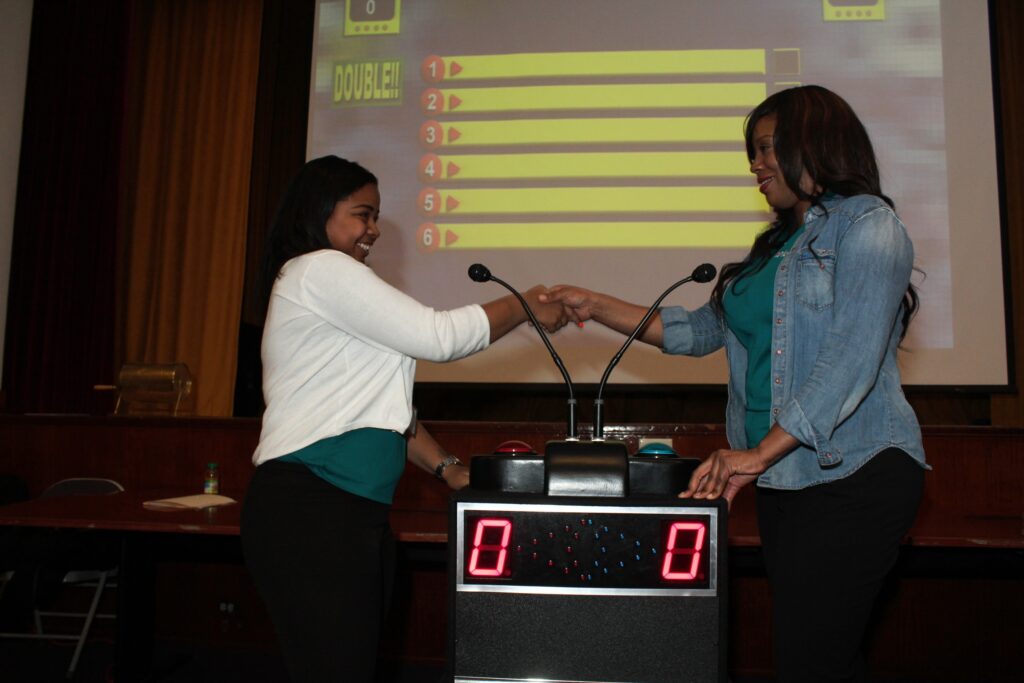
Looking for fun team activities at work? Family Feud games are getting very popular. They turn the TV show into something coworkers can play. It’s great for team days out or office parties.
When you play, you divide into family teams. Each team tries to guess what other people said in surveys. It makes everyone think fast and talk more with each other.
Here’s why Family Feud is perfect for your next team-building event:
- It makes teamwork fun through a bit of rivalry.
- It helps everyone get better at talking and listening.
- You get to solve problems as a team.
- You can play it online or at a gathering.
Do you want your game to run smoothly? You can hire experts to set up and run the Family Feud game. This way, you just enjoy playing with your coworkers.
| Aspect | Benefits |
|---|---|
| Team Dynamics | Encourages working together and having fun in a friendly way |
| Skill Development | Improves how fast you think and talk in front of others |
| Adaptability | It can work with any group size or setup |
| Entertainment Value | Keeps everyone involved and having a great time |
To really have fun with Family Feud, make the questions about things everyone in the office knows. This makes the game click with your team.
“Family Feud changed our work gathering. We had so much fun laughing and competing.” – Sarah, HR Manager
Don’t forget, getting ready and being excited is the secret to a good Family Feud day. With interesting questions and everyone joining in, it will be a day to remember.
3 – Name That Tune: A Musical Challenge for All
Are you ready for a musical challenge that will bring your team together? “Name That Tune” is a great choice. It’s a fun game that tests your team’s knowledge of music from different styles.
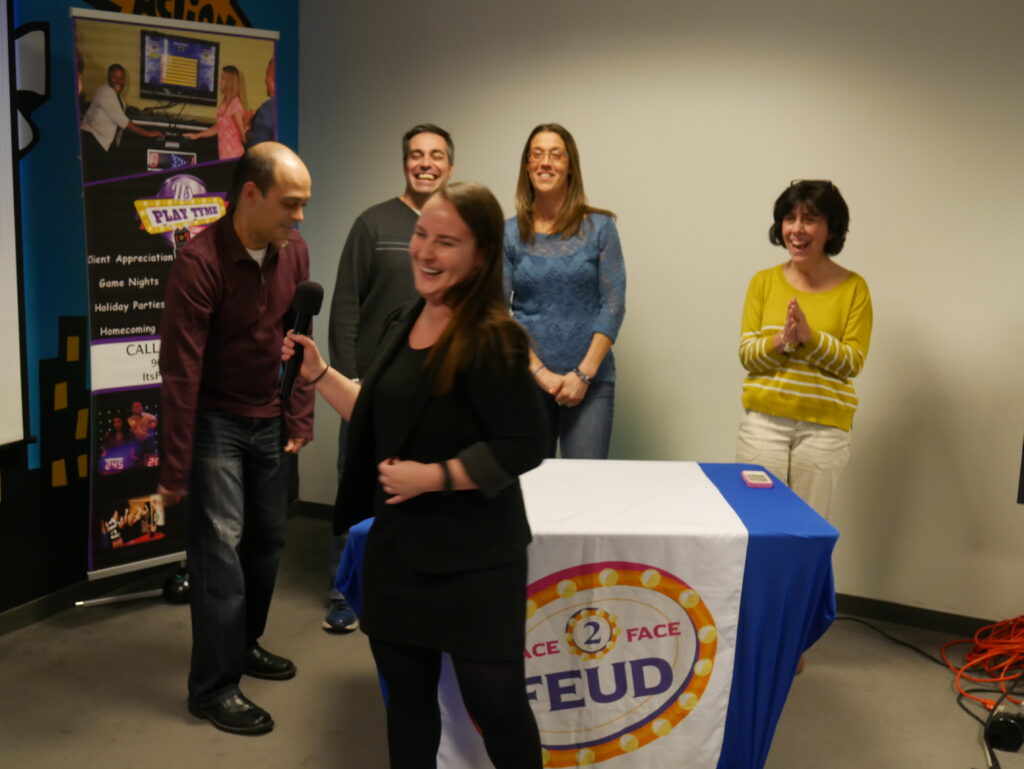
>>>>Click here for fun team building games to boost morale.
a – Incorporating Company-Specific Songs
Make “Name That Tune” even more special by adding songs that mean something to your company. You can use your own jingles, special event songs, or tracks your team loves.
This makes the game more exciting and connects everyone through shared songs.
- Company jingles or slogans, set in music
- Songs from past events
- Music from your commercials or videos
b – Adapting for Different Music Tastes
Put together a playlist that everyone will enjoy. Try to include a mix of music from different times and styles. This way, the game is fun for everyone, and it might introduce some to new favorite songs.
c – Scoring and Team Dynamics
Use a scoring system that encourages teamwork and a bit of competition. Here are some ideas to make things more interesting:
- Teams can huddle up to guess harder songs
- Give extra points for naming the artist and the year the song came out
- Try a “pass the mic” round for fun challenges between teams
“Name That Tune” is beloved as it’s more than just a game. It’s about quick wit, knowing pop culture, and the love for music. While playing, teams strengthen their connections and make good memories.
This game shows us how music can bring a team closer together.
4 – Wheel of Fortune: Spin to Win Team Bonding
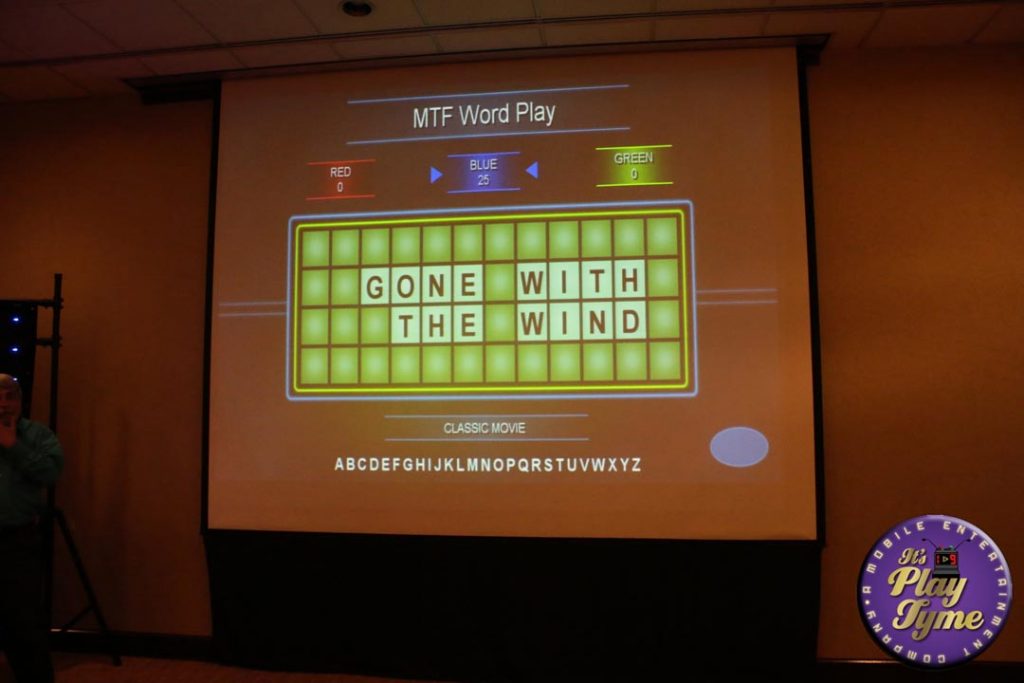
Word Play – Wheel of Fortune
Looking for a fun game show for team outings? Wheel of Fortune is a top pick. It brings joy and helps your team come closer. Its mix of puzzles, working together, and a bit of friendly competition is perfect for teams.
Getting Wheel of Fortune ready for your company outing is easy. You’ll need:
- A big wheel (you can use a real one or a digital one)
- A puzzle board
- Custom puzzles
- Team buzzers
- A way to keep score
Make the game feel more like your company by using your own words in the puzzles. This adds fun and helps team members learn more about the company.
“Wheel of Fortune brought our team together like never before. The laughter and friendly competition created lasting bonds.”
To get everyone involved, here are some suggestions:
- Put everyone in teams that are evenly matched
- Change up who’s solving the puzzles and who’s spinning the wheel
- Give prizes that are related to your company
- Have a final round with a big prize
Wheel of Fortune works for both in-person and online events. For virtual meetups, use a digital wheel and an online puzzle board. In-person events can use a life-sized wheel for extra fun.
| Format | Wheel Type | Puzzle Display | Team Interaction |
|---|---|---|---|
| In-Person | Physical | Large Board | Face-to-Face |
| Virtual | Digital | Shared Screen | Video Call |
By having Wheel of Fortune at your event, you’re doing more than just having fun. You’re helping your team work better together. This game promotes cooperation, quick decision-making, and supporting each other. These are crucial for a strong, united team.
5 – Minute to Win It: Quick Challenges for Fast-Paced Fun

cookie face funny 60 second challenge
>>>>Click here for fun team building games to boost morale.
Want to make your office more fun with some 60 second team challenges? Then, Minute to Win It is a great choice. It’s like the TV show, where you do easy tasks with regular household items.
a – Selecting Appropriate Challenges
Pick challenges that your team can do well and fit the office. Here are some ideas:
- Stack Attack: Build a tower of plastic cups in under a minute
- Defying Gravity: Keep three balloons in the air for 60 seconds
- Face the Cookie: Move a cookie from forehead to mouth without using hands
- Penny Hose: Transfer pennies from a bowl to a stocking using only your toes
b – Setting Up Stations
Set up different stations for each challenge. This keeps energy high. Make sure each station has:
- Clear instructions for the challenge
- All necessary materials
- A visible timer
- A scorekeeper to track results
c – Time Management and Rotations
Managing time well is key to a fun game. Use a timer everyone can see. Change teams often to keep things lively.
You can play in these ways:
- Individual competition: Each person attempts all challenges
- Team relay: Groups work together to complete tasks
- Head-to-head battles: Two players or teams compete simultaneously
Minute to Win It is perfect for any team size or setup. These games will make your next event memorable. They’ll bring your team closer and make everyone much happier.
6 – Lip Sync Battle: Unleash Your Team’s Inner Performers
Get ready to amp up your company retreat with a lip sync battle. It’s a fun way to energize your team and make memories.
At this event, everyone can show off their talents in a fun, supportive space. We’ve listed 5 steps below.

- Choose a venue with a stage or clear performance area
- Set up a quality sound system for the music
- Create a playlist of popular songs
- Encourage teams to bring props and costumes
- Appoint judges or let the audience vote for winners
Lip sync battles are great for new team members. They help people get to know each other and be creative. Watch as even the shyest colleagues become stars on stage!
“Our lip sync battle was the highlight of our retreat. It brought out sides of our coworkers we never knew existed!”
Here are some tips to make your lip sync battle even better:
- Create themed rounds (e.g., 80s hits, movie soundtracks)
- Incorporate company-related songs or jingles
- Host a virtual battle for remote teams via video conference
- Award prizes for best performance, most creative, and audience favorite
Don’t forget, the point is to have a blast and bring your team closer. Everyone should join in, from interns to top bosses. A lip sync battle can really strengthen your team and create tight-knit friendships.
| Benefits of Lip Sync Battles | Impact on Team Dynamics |
|---|---|
| Encourages creativity | Builds trust and camaraderie |
| Reduces workplace stress | Improves communication |
| Showcases hidden talents | Breaks down hierarchical barriers |
| Creates shared experiences | Enhances team cohesion |
Adding a lip sync battle to your company retreat is more than just fun. It’s about team building and boosting morale. It’s an experience that will keep your team thrilled for a long time.
FAQ – Frequently Asked Questions
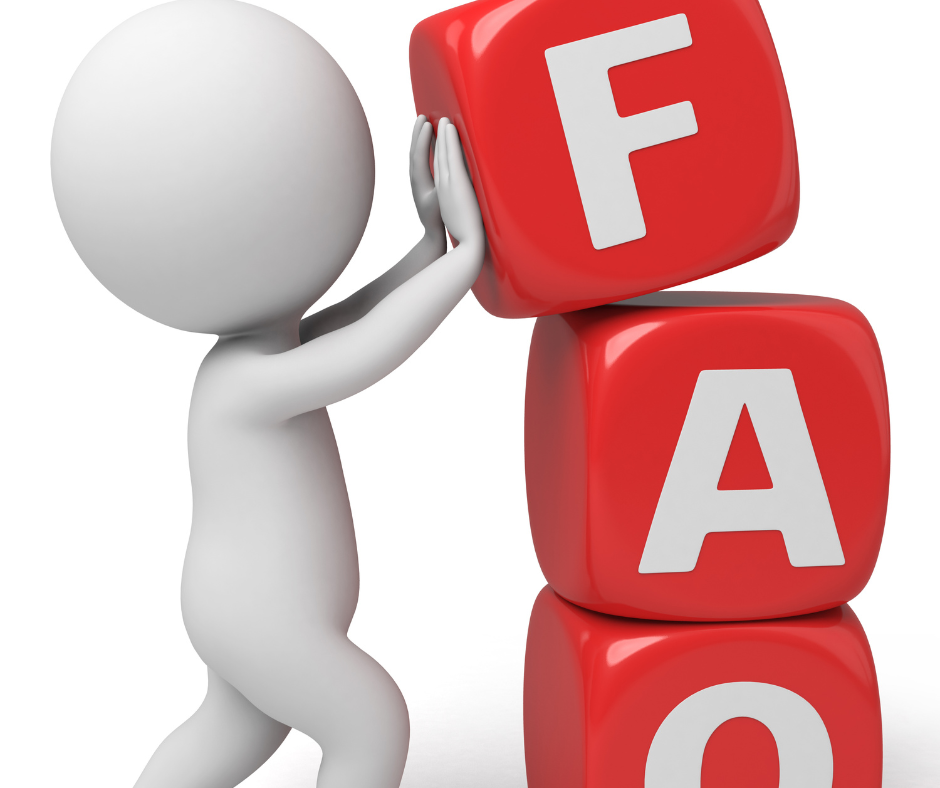
frequently asked questions
What are the benefits of using game shows for team retreats offsite?
Game shows are fun and boost team spirits at retreats. They let people relax and enjoy some healthy competition. Game shows work well both in person and online, fitting different team needs.
How do game shows promote team building?
Game shows are more than just fun; they build team skills too. They lift team moods, bring out friendly rivalries, and let folks show off what they know. These games are flexible, fitting any team size and schedule.
They also help with quick thinking and talk among teammates.
What makes Jeopardy a popular choice for office game shows?
Jeopardy is loved for testing odd facts knowledge in a team setting. It’s great for encouraging friendly meets between teams. Employees get a chance to shine based on their expertise, making the team proud together.
How can Family Feud be adapted for team building?
Family Feud continues to be a hit for team building, even in its 24th season. Teams are rival “families” guessing survey answers. This game spurs quick thinking and tightens teamwork and social ties among players.
Why is Name That Tune a good choice for team building?
Name That Tune, a hit from older times, can liven up team activities. It’s great for showing how a shared goal can unite a team. Plus, it’s flexible, letting you pick music that fits your group best.
How can Wheel of Fortune be adapted for team retreats?
Wheel of Fortune, under the name “Spin to Win,” adds fun to team events. Teams solve puzzles to get points, boosting problem-solving and collaboration. It works well online or face-to-face, with puzzles that can be tailored to your business.
What makes Minute to Win It a good choice for team building?
Minute to Win It brings quick, fun challenges to team settings, making everyone laugh. It fits all team types, making it ideal for any gather. Playing in a group or alone is fine, giving it the perfect mix of fun and flexibility.
How can Lip Sync Battle be used for team building?
Lip Sync Battle is a fun way for teams to compete to their favorite songs. It helps break the ice among new members and boosts confidence. For virtual teams, it’s easy to do via video calls.
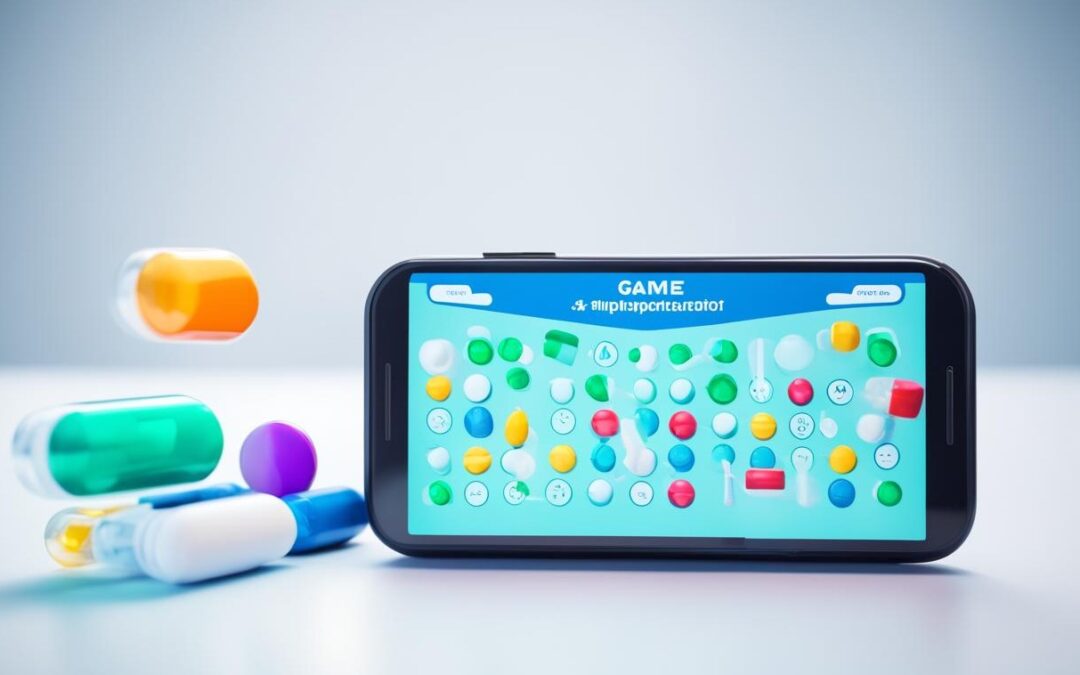
Boost Engagement with Gamification for Pharmaceutical Companies
By 2021, gamification for pharmaceutical companies can expect 2.7 billion people will be playing more online games according to NewZoo, a gaming analytics firm. The world of digital gaming is spreading fast. Pharmaceutical companies are catching on, using games to reach and teach both patients and
employees. The market for game-based health tools and activities was over $16 billion in 2016, says Global Market Insights. These tools mix health info with fun games. This way, players stay interested and learn more over time. Good health knowledge leads to better health choices which is a win-win scenario.
Games can do more than just pass the time. They can help with training as well as help patients recover from strokes or manage pain better.
For instance, Bandit’s Shark Showdown helps with stroke rehab. SnowWorld tackles pain for burn victims. These are just a few examples of how games can make a big difference in healthcare.
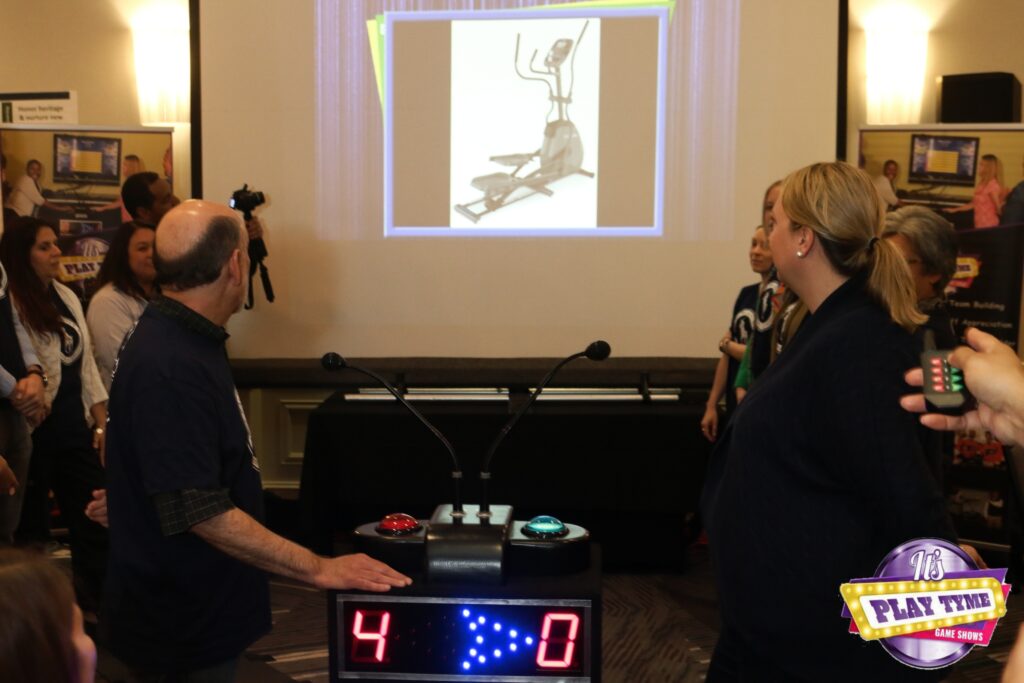
Key Takeaways
- Gamification for pharmaceutical companies harnesses the popularity of digital games to improve patient engagement and education.
- The healthcare gamification market exceeded $16 billion in 2016, showing strong investment and growth in this innovative approach.
- Interactive game activity can significantly enhance patient outcomes, as evidenced by applications like Bandit’s Shark Showdown and SnowWorld.
- Engaging and educating patients through gamification software contributes to continuous patient involvement and better health results.
- Pharmaceutical companies can leverage gamification as part of a holistic healthcare marketing strategy.
Understanding Gamification in the Pharmaceutical Industry
Gamification is more than just fun. It’s about applying game design elements to motivate others in non-gaming areas. In the pharmaceutical industry, gamification uses game-like aspects such as rules, challenges, rewards, and stories.
This helps in achieving bigger goals such as independence and reaching targets.
Key Concepts of Gamification
When it comes to healthcare, gamification is designed to make learning and events more enjoyable. It uses tasks like challenges, quizzes, and competitions to get people participating. This engagement is key to understanding and remembering the important information.
Using gamified methods, organizers can learn more about their audience. This leads to better tailored future events and improved experiences. Gamification also helps in medical education and marketing to the public. It can speed up progress in research, awareness of diseases, and efforts in prevention.
The Role of Gaming Mechanics
The design of game-like features encourages people to take part and stay motivated in healthcare events. Good game design can help patients get healthier, understand medical advice better, and follow it correctly. Technologies such as The Training Arcade® are used worldwide to make learning more effective.
The Training Arcade® has eight games ready to use in 16 languages. You can add your own educational content quickly. It works on various devices and is great for online and in-person learning. The games give detailed reports on how individuals and groups are learning, helping to focus on specific needs.
Abbott Brazil saw great results when they used gamification in a product launch, reducing the knowledge gap from 27.5% to 7.5%. This shows the strong impact of gamification in marketing for healthcare. Games can be tailored for users with busy schedules, increasing their knowledge and keeping them interested with apps like Atrivity.
How Gamification Enhances Patient Engagement
Gamification can change how patients interact with pharma. By combining learning and fun, health games make taking medication interesting. They also boost patient involvement and teach better health habits.
Educational and Motivational Aspects
Gamification mixes education with the power of play. It helps people understand why they need to take their medicine, eat well, and stay active. Doe to this, people feel excited about getting and staying healthy. This happens through fun and rewarding health games.
Games use tools like tracking progress and getting virtual prizes. These keep people motivated. They help patients feel like they’re winning at health. This is important for keeping up with a health plan.
Real-World Examples of Success
Some games are already making a big difference for patients. Like Bandit’s Shark Showdown, which helps stroke patients with their motor skills. This game from Johns Hopkins School of Medicine makes therapy fun.
Then there’s SnowWorld, aiding burn victims in dealing with pain. It uses virtual reality to distract from the hurt. Its success comes from reducing pain by 80%, shown in brain scans. These games are making a real impact in healthcare.
The market for healthcare games has grown a lot. It reached more than $16 billion in 2016. More and more pharma companies are using games to meet patient needs. This way, they encourage better health actions and care.
| Application | Purpose | Outcome |
|---|---|---|
| Bandit’s Shark Showdown | Treat stroke patients | Improved motor skills |
| SnowWorld | Alleviate pain in burn victims | Reduced pain signals |
Got In-Person Games? – PRESS PLAY! #funatwork boostmorale
If you need help planning exercises for your next team builder, look no further.
We travel all over the NYC metro area to perform live shows.
Contact us, as we have a plethora of fun exercises, games and challenges used to break the ice at any corporate event or party.
Free consultation and explain how it works in 3 simple steps.
Gamification Strategies for Healthcare Marketing
Using gamification in healthcare marketing combines smart design, focusing on patients, and uses proven strategies. Online games are incredibly popular, with around 2.7 billion users estimated for 2021. This means there are big chances for drug companies to connect with people, but it needs careful planning.
Designing Effective Gamified Systems
For a game to work well, it’s key to involve skilled game designers and look at what patients really want. Companies should aim to create in-game currencies that have real meaning for the players. Adding rewards that appeal to both their inner desires and outer achievements can keep them interested.
Make the game clear with specific goals, offer feedback quickly, and show how far players have come. Use features like moving up levels, earning rewards, and gaining points to encourage people. These methods help in making the game fun and keeps players in it for the long run.
Leveraging User Data for Better Outcomes
After a game is launched, using feedback from players is crucial to make it better. By watching how they interact and making changes, the game can fit their needs more. Knowing their progress in real-time helps players see where they stand and what they can do to get better.
Features like leaderboards can make things exciting by adding friendly competition. Badges and medals give players something to show off and be proud of, which makes them more involved. Creating a community within the game can also support teamwork and encourage everyone to do better together.
When pharma companies focus on what patients need and use data smartly, their games can help make healthcare marketing better. This way, they contribute to improving the health outcomes of the people playing their games.
Benefits of Gamification in Pharma
Gamifying the pharmaceutical industry has numerous benefits. It uses game elements to make patient care more engaging. This leads to better health outcomes and more active patients.
Increased Patient Activation
Gamification boosts how involved patients are. Through fun games, patients feel like they’re in charge of their health. This helps them manage their health better and take more actions to stay well.
Better Health Literacy and Education
Games also boost understanding medical info. They turn complicated health details into fun and easy-to-grasp content. This makes it easier for patients to learn about their health and how to stay well.
Motivating Medication Adherence
Games help patients stick to their medication plans. Studies show that games like MedScrab can make taking medicine more enjoyable. As a result, patients are more likely to keep up with their treatments.
Research by experts like Hope, D. L., Grant, G. D., Rogers, G. D., & King, M. A. (2023) confirms this. They found that gamification in pharmacy education boosts engagement. The fact that the healthcare gamification market hit over $16 billion in 2016 shows its significant impact.
| Benefits | Supporting Data |
|---|---|
| Increased Patient Activation | Gamification fosters autonomy and proactive care |
| Better Health Literacy and Education | Educational games simplify complex medical information |
| Motivating Medication Adherence | MedScrab’s success in adherence promotion |
Gamified Solutions for the Pharma Industry
The pharma industry is finding gamified solutions for pharma industry very useful. These tools help share information better, keep knowledge in mind, and interact with professionals and patients. For example, Atrivity gives great tools for content delivery and insights. This helps in planning marketing and training.
New ways of engaging with healthcare are at the heart of change. Training games give clear data to find out where learning lacks. The Game Agency’s games are used in many places worldwide, showing how flexible and far-reaching gamification technology is.
Our games can be played on the web and are easy to use on phones and tablets. This means they’re perfect for pharma sales teams all over. The information from playing these games includes many metrics. These help companies make better decisions.
Then, there’s The Training Arcade®, ready with eight games for training. They can be set up quickly in 16 languages with any content, and no programming is needed. This quick setup lets pharmaceutical businesses use gamification fast and effectively.
While many companies try healthcare gamification, not all succeed in engaging patients. Fast launches and poor design are common reasons for this. To make a great gamified solution, it’s key to use what users say, do solid design work with them, and get help from expert game designers.
Successful gamified solutions for pharma industry mix both self-rewards and outside motivations to keep patients involved long-term. Game features focusing on smaller acheivements can be very rewarding. By keeping an eye on the effectiveness of these games and weaving them into larger health support plans, pharma firms ensure their success in the long run.
Here’s a side-by-side look at some top gamified solutions:
| Solution | Key Features | Languages | Deployed In |
|---|---|---|---|
| The Game Agency | Measurable data, Global adaptability | 20+ | 100+ countries |
| The Training Arcade® | 8 training games, Rapid deployment | 16 | Global |
| Atrivity | Dynamic delivery, Robust analytics | Multiple languages | Global |
These innovative healthcare engagement options are clear signs of innovation and flexibility in the pharma world. Gamification is key to making experiences that work well, can be measured, and are fun for everyone involved.
Challenges in Implementing Gamification for Pharmaceutical Companies
Gamification in the pharmaceutical world offers new chances but comes with its own challenges. The healthcare gamification market was worth over $16 billion in 2016. Yet, many pharma efforts miss the mark due to weak user involvement or feedback problems.

employee-engagement-game-show-idea
It’s vital to know what drives users and how they act. Health apps with game elements can boost participation by 48%. But, failing to listen to users can lead to launch problems, like low engagement. Getting user feedback and using their data can make a big difference.
Adding rewards, both intrinsic and extrinsic, can keep patients engaged. But, offering too much can backfire. In fact, too many rewards may lead to a 25% fall in user interest. So, balancing rewards and listening to what users say are crucial.
There are also big ethical concerns to face. Bad practices in health gaming reduce user happiness and commitment by 15%. To fight this, deep audience research and ongoing changes should focus on patient needs. This is more important than just seeing game results.
Pharma firms must think long-term and patient-first in their approach. They should tie gamification to better support patients overall. This way, it enriches the care strategy.
Pharma Gamification Trends to Watch
The pharma gamification field is changing fast. It’s all thanks to new tech and how patients respond. Social media in pharma gamification is a big hit, letting experts share fun, educational games. These games spur good habits.
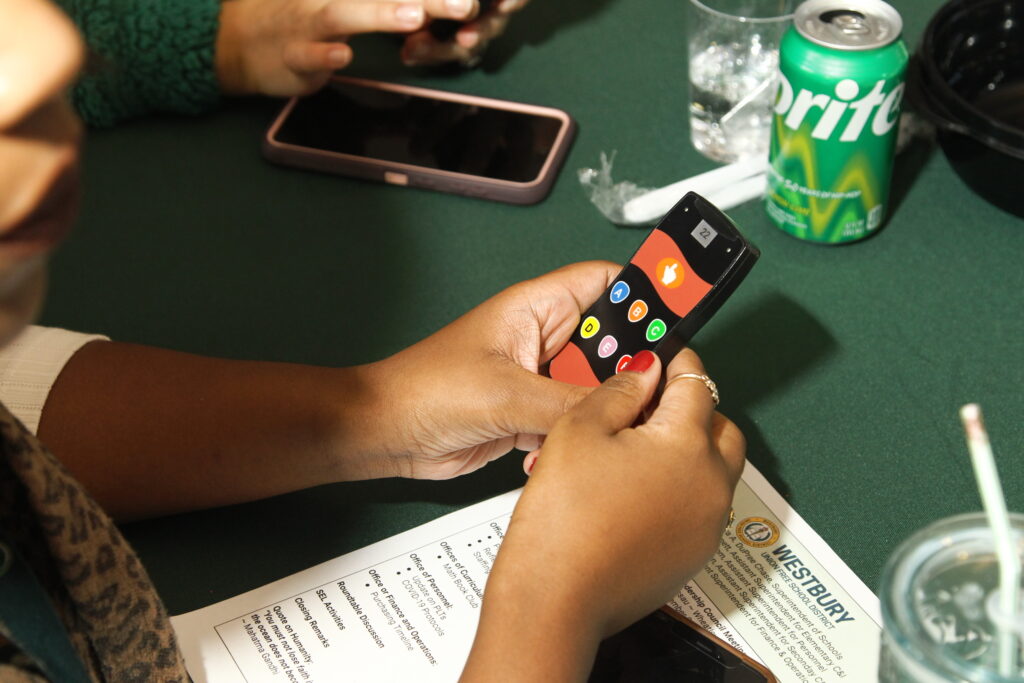
audience response system for in-person engagement games
Social media is turning heads in pharma games. Marketers and professionals use online platforms to get info out. These days, games are key in getting patients more involved and know about their health.
Games that look like real life are now big in teaching about sickness and meds. They come with tools to help track health stats. By using games, doctors can help their patients do better. This shows that playing can really change how we act.
Even pros, like pathologists, are seeing the benefits of game-based learning. Games help them work faster. This boost is thanks to smart, individual-focused games used on phones.
Doctors are starting to see the value in using games to connect with their patients. Gamification allows medical companies to inform and advertise more creatively. Over time, we’ll see more of how using social media in pharma gamification helps everyone learn better.
The global healthcare gamification market is forecasted to exceed $47,281.5 million by 2026, with a Compound Annual Growth Rate (CAGR) of 11.9% during the projected period.
Measuring the Impact of Gamification in Pharma
It’s important to check the effects of gamification in the pharmaceutical industry. This helps us see if it works and plan better strategies. Games should be able to track how much people learn and if their actions improve because of the games. This way, drug companies can make their games better, help spot where more learning is needed, and offer lessons that suit patients and doctors best.
In health, companies can now reach a huge online gaming market. By 2021, about 2.7 billion people are expected to play online games, says NewZoo. The use of game elements in healthcare has grown a lot, hitting over $16 billion in 2016, as stated by Global Market Insights. Games like Bandit’s Shark Showdown and SnowWorld show how they can make a big difference.
Pharma can better its games by watching how users engage and making changes as they go. This method helps to see if the games really help patients. With data and working together with game experts, companies can make sure their games keep being liked and used.
One key is to research with patients to find what they really care about. Adding both fun game parts and rewards that matter to patients, like points or prizes, can make a game really interesting. Keeping patient info private and following rules like HIPAA is a must for these efforts to work.
The outlook for using games in healthcare is bright. By 2026, the global market for health games is expected to go beyond $47,281.5 million. This shows that using game elements is getting more popular and showing good results in patient care.
Future Outlook for Gamification in Pharma
The future of gamification in healthcare looks bright, especially in the pharma world. Due to the spread of digital tech and better understanding of what patients need, gamification helps a lot. It’s great for teaching both patients and employees. For patients, it makes sure they follow their treatments, and manage their conditions.
Through games and competitions, patients and healthcare workers stay more involved and remember key information better.
Gaming in pharma will create safe places for learning and skill-building. Gamified events will boost teamwork, open new business doors, and form strong relationships. Doctors will find these gaming setups especially useful for pushing their research forward quickly.
By 2030, the market for healthcare games could grow to be worth over USD 11 billion. These games will be even more powerful in changing health behaviors, thanks to social media and improved technologies. The main goal is to make patient care and results much better by making health info and learning fun.
FAQ – Gamification for Big Pharma

frequently asked questions
What is gamification for pharmaceutical companies?
Gamification uses game design to engage patients. It makes health tasks fun and rewarding. Patients learn more about their health and stick to medication plans.
How does gamification benefit patient engagement?
Gamification makes health tasks fun and rewarding. It encourages patients to stay informed and make better health choices. This is done through game-like rewards and interactive tools.
What are some examples of successful gamification in healthcare?
Games like Bandit’s Shark Showdown and SnowWorld show gamification’s success. They make improving motor skills and coping with pain enjoyable. These games better patient health outcomes through fun designs.
How can pharmaceutical companies design effective gamified systems?
For effective gamified systems, pharma companies work with game designers. They use patient data and focus on user needs. Balancing game fun with health education makes effective experiences.
What role does user data play in gamification for pharma?
User data customizes gamified experiences for patients. It tracks progress and offers feedback. These insights improve the game and patient care through revamped design.
What are the key benefits of gamification in pharma?
Gamification boosts patient involvement and knowledge in healthcare. It spurs better drug use and health management. It helps patients understand health issues and take control of their care.
What challenges do pharmaceutical companies face when implementing gamification?
Pharma companies might rush, have bad designs, or ignore feedback. Misusing game mechanics in health can hurt the strategy. Keeping up research and updates is key to solving these.
What are some emerging trends in pharma gamification?
Pharma’s new trends include social media, crowdsourcing, and pro competitions. These improve health campaigns and medical knowledge through interactive games.
How can companies measure the impact of gamification in pharmaceuticals?
Strong analysis tracks how games affect understanding and behavior. It fine-tunes gamified approaches. This improves tailored learning in health games.
What is the future outlook for gamification in the pharmaceutical industry?
The future looks good. As tech and patient understanding improve, so will gamification. It will be vital for health learning, drug use, and disease control. This leads to better patient health.
